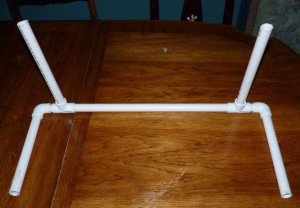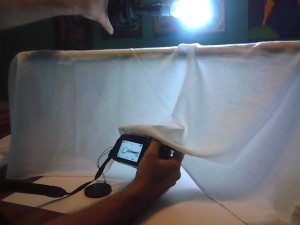Each Summer, while the kids are out of school, I arrange a full day out with each of them. Sometimes that means taking a day off of work; on other occasions we squeeze it in on a Saturday. Regardless of when it is, it’s one of the things I look forward to a ton each year (and seems to be a highlight for the young people too).
This year, the first adventure was with Liam. Thanks to Kevin Huffaker, a friend of mine from the university who is not only an amazing polymath but also a tremendously generous guy, we were able to start our day with a SCUBA primer. Neither Liam nor I had ever been before. We both love being in the water, and found the experience utterly delightful. While the river was running low and water conditions turned cloudy pretty quickly as people upstream swam around, we had a great time learning how to control our buoyancy and seeing a bit of the river from a new vantage point.
From there, we treated Kevin to lunch at Valentino’s, Liam’s favorite pizza place in San Marcos, and then caught the then-current Harry Potter movie. A trip to the Blazer Tag center up in Austin was next, where he and I emerged 1st and 2nd in our game with 30 other people. (All those video games do pay off!) The center in Austin is one of the best arenas I’ve been to, and was a ton of fun. We finished off the day with a visit to the Nazi Pirate at Peter Pan mini golf, where I was able to salvage a bit of my honor after the thumping Liam gave me at laser tag.
Next up was my day out with Maggie. She loves nothing more than to be in the water, so Schlitterbahn has been the natural destination for us for many years. Repeatedly voted best waterpark in the country, it’s only 20 minutes away from our house, and is a much more agreeable experience than many amusement parks these days. (Free parking, bring your own picnic, and new stuff every year.) We were a bit disappointed to see that Family Blaster, a ride that uses high-powered jets of water to shoot a raft containing up to 6 people up a hill, had been retired, but we did spend a delightful day climbing on floating crocodiles, navigating our tubes down 20-minute long tube chutes, and slipping down slides. We even invented a word game while we were waiting in line that’s become a standard in-car activity for our family.
I took Abigail out next. Our first stop was Tacodeli, a vegetarian-friendly taco joint that’s both delicious and a quintessentially Austin experience. After that, we wandered Barton Creek mall for a bit, and then went to see Cowboys & Aliens, which I’d been looking forward to since seeing the first preview. Our next stop was Mozart’s, a wonderful coffee shop on the banks of Town Lake. We got tasty beverages, I introduced Abby to cannoli (one of my favorite treats), and we both pulled out guitars and played and sang together down by the water while the turtles looked on appreciatively. When our fingers tired, we moved on to Pinballz (the best arcade I’ve ever visited) and played Addams Family, Twilight Zone, and other pinball classics. Our last stop for the day was at the Alamo Drafthouse for Abby’s first Master Pancake Theater show: Twilight! She was a fan of the books, and had been disappointed by the first movie, so I figured a lampooning would be the ideal way to enjoy the second. She agreed.
In addition to the goal of simply having a grand time, I also set Abby and I the task of both taking lots of photos along the way, and picking out our favorites along the way to edit and post on Facebook as a record of our day together. Here are the 8 shots we deemed best.
Unfortunately, I had a dreadful time coordinating Emily’s and my calendars, but in March of the next year, we finally managed to find a day we both had open. After hearing of Liam’s mini-adventure, Emily was keen to try SCUBA as well, so we rounded up Kevin again and my friend Jason and set off for a larger-scale run: near the headwaters of the San Marcos River down to the whitewater course at the other end of town. Since we’d finally had some rain after a tremendous drought, the water was running clear and fast, and we had beautiful visibility as we swam under waterfalls, through valleys of endangered Texas Wild Rice, and past a variety of water creatures. Emily filled a bag with treasures she found in the water, and I reveled in the opportunity to see the river as we never had before.
After our swim, we regrouped at the house while eating big Subway sandwiches, and then Emily and I went north for her first Master Pancake Theater show: Back to the Future. The lads did a terrific job with it, and we had a great time eating, drinking, and laughing our heads off. We even got the surprise treat of getting to overhear some of a Young the Giant show as we walked past — a favorite of Emily’s that she hadn’t even known was playing that night.
I had a terrific time getting to enjoy each of our kiddos individually, and treat them to some unique experiences they all enjoyed. Thanks, squirrels, for the great time. Now, let’s get cracking and plan this year’s adventures!








